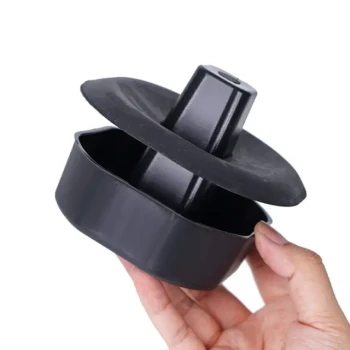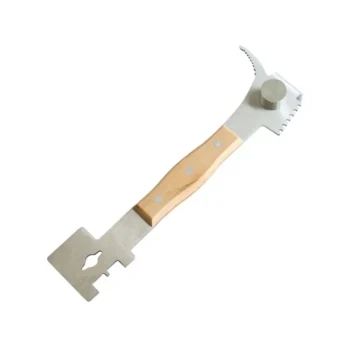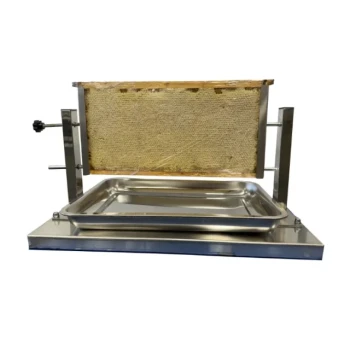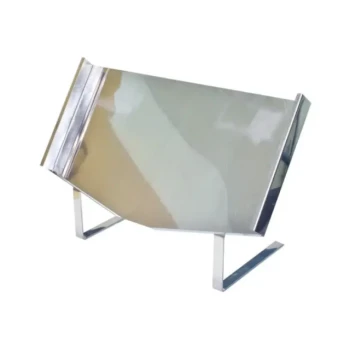To put it simply, a hive stand protects your bees by elevating the colony off the ground. This simple change creates a significant physical barrier that makes it much harder for ground-based predators like skunks and mice, along with other pests, to access and harass the hive entrance. It forces these intruders to work harder, exposing them and giving the guard bees a crucial defensive advantage.
The core value of a hive stand is not just height; it is about fundamentally altering the defensive landscape. By creating distance from the ground, you disrupt the attack patterns of common threats and give your colony a superior strategic position.
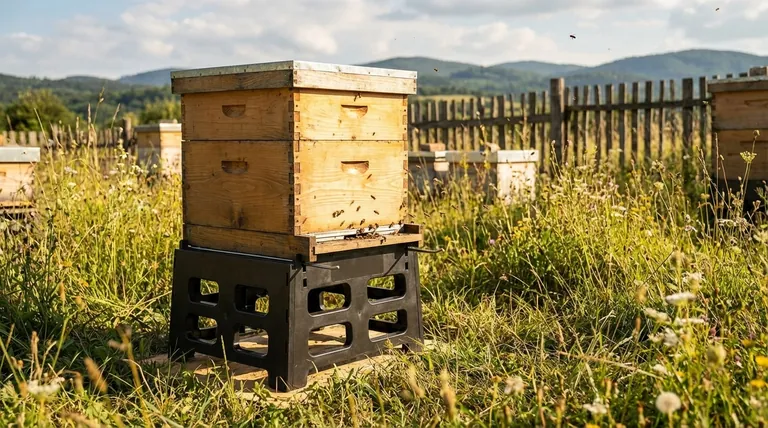
The Strategic Advantage of Elevation
A beehive sitting directly on the ground is an easy, low-risk target for a host of unwelcome visitors. Elevating it, even by a foot or more, changes the entire dynamic.
Deterring Ground Predators
Predators like skunks approach a hive and scratch at the entrance. This lures guard bees out one by one, which the skunk then eats.
When a hive is on a stand, the skunk must stand on its hind legs to reach the entrance, exposing its vulnerable underbelly to stings. This awkward and exposed position often serves as a powerful deterrent, persuading the predator to seek an easier meal elsewhere.
Preventing Rodent Infestations
Mice and other rodents are particularly problematic in colder months. They seek the warmth and food resources within a hive, where they can destroy comb, contaminate honey, and stress the colony.
A hive stand makes entry significantly more difficult. While a mouse can climb, the journey up a stand leg is far more challenging and conspicuous than simply walking into an entrance at ground level. This gives bees a better opportunity to repel them.
Common Pitfalls and Limitations
While essential, a hive stand is not an impenetrable fortress. Understanding its limitations is key to providing comprehensive protection for your colony.
It Doesn't Stop Determined Predators
A hive stand will do very little to deter larger or more powerful predators. A bear, for example, can topple a hive whether it's on a stand or not. For these significant threats, other measures like electric fencing are required.
Stability Is Non-Negotiable
The biggest mistake a beekeeper can make is using a flimsy or unstable stand. A wobbly hive is a constant source of stress for the colony and can easily be knocked over by predators, strong winds, or even the beekeeper.
Ensure your stand is placed on level, solid ground and is strong enough to support the full weight of a hive laden with honey, which can exceed several hundred pounds.
Making the Right Choice for Hive Security
Your specific local threats should guide your approach, but a stand is a universally beneficial piece of equipment.
- If your primary focus is deterring skunks and raccoons: Any stand that elevates the hive entrance at least 18 inches will make a significant and immediate impact.
- If your primary focus is preventing mice in winter: A stand is your first step, but consider adding metal flashing or guards around the legs to make them unclimbable.
- If your primary focus is overall hive health: Elevating the hive improves air circulation and reduces moisture absorbed from the damp ground, which helps prevent rot and discourages pests that thrive in humid conditions.
Ultimately, a hive stand is a fundamental tool that shifts the defensive advantage in favor of your colony.
Summary Table:
| Threat | How a Hive Stand Protects |
|---|---|
| Skunks & Raccoons | Forces predators into an exposed, vulnerable position, deterring attacks. |
| Mice & Rodents | Creates a difficult, conspicuous climb, reducing winter infestations. |
| Ground Moisture & Rot | Improves air circulation and prevents moisture absorption from the ground. |
Ready to fortify your apiary? A stable, well-designed hive stand is a fundamental tool for any serious beekeeper. At HONESTBEE, we supply durable, commercial-grade beekeeping supplies and equipment to commercial apiaries and distributors through our wholesale-focused operations. Protect your investment and give your colonies the defensive advantage they deserve. Contact HONESTBEE today to discuss your wholesale needs and elevate your hive security.
Visual Guide

Related Products
- Plastic Bee Hive Stand for Beekeeping
- Metal Hive Feet Bee Hive Stand for Ant Protection
- Metal Bee Hive Stand Bee Box Stand for Beekeeping
- Professional Drop-Style Hive Handles for Beekeeping
- Yellow Plastic Bucket Pail Perch for Beekeeping
People Also Ask
- What are the advantages of a second hive if the queen is killed? The Ultimate Insurance Policy for Your Apiary
- What is the purpose of a hive stand in a Langstroth hive? Protect Your Hive and Boost Colony Health
- What are the main differences between Langstroth and Top Bar Hive designs? Choose the Right Hive for Your Beekeeping Goals
- How do bees regulate ventilation and temperature in the hive? Master Hive Climate Control
- How do plastic bee hives compare to wooden hives in handling? Reduce Strain & Boost Efficiency





